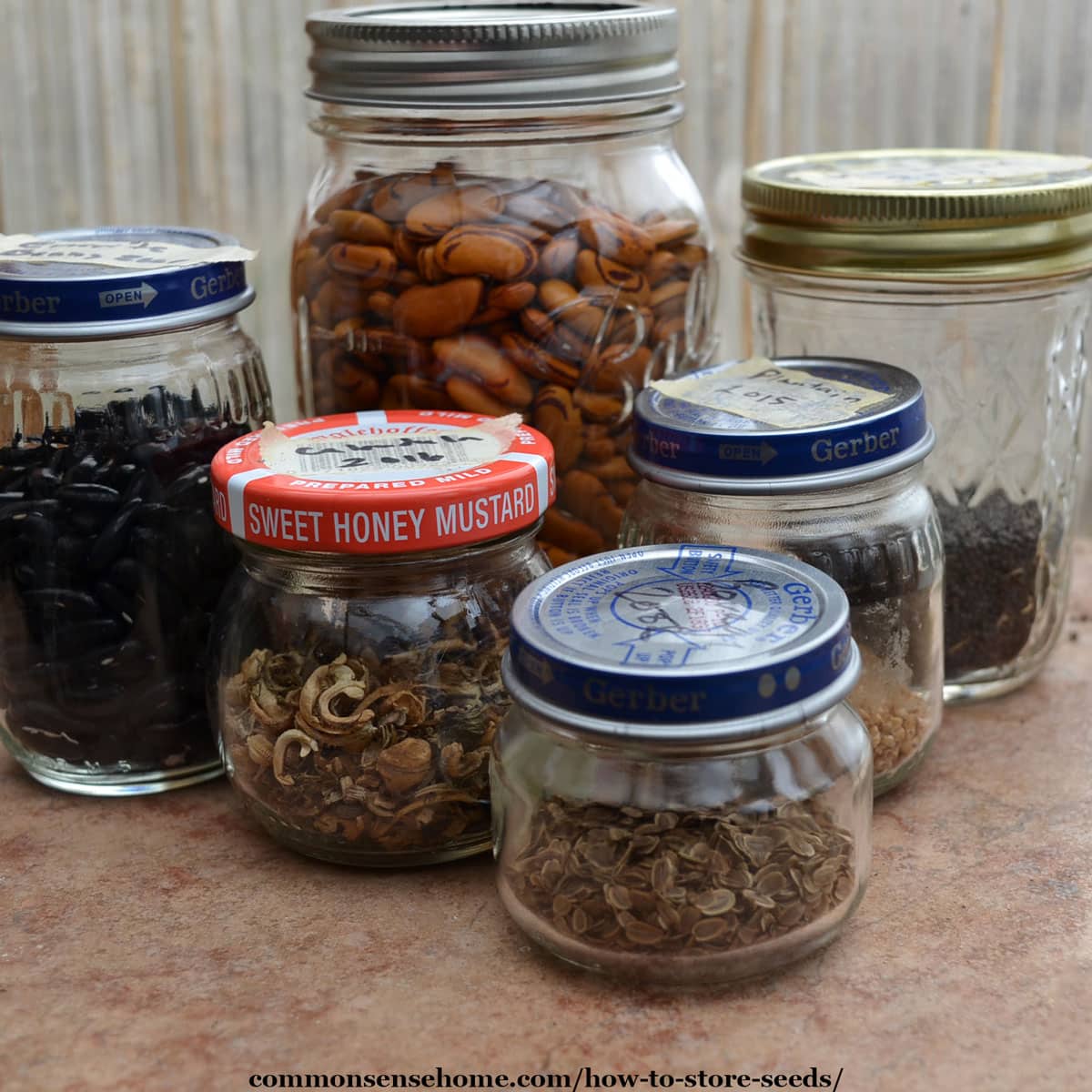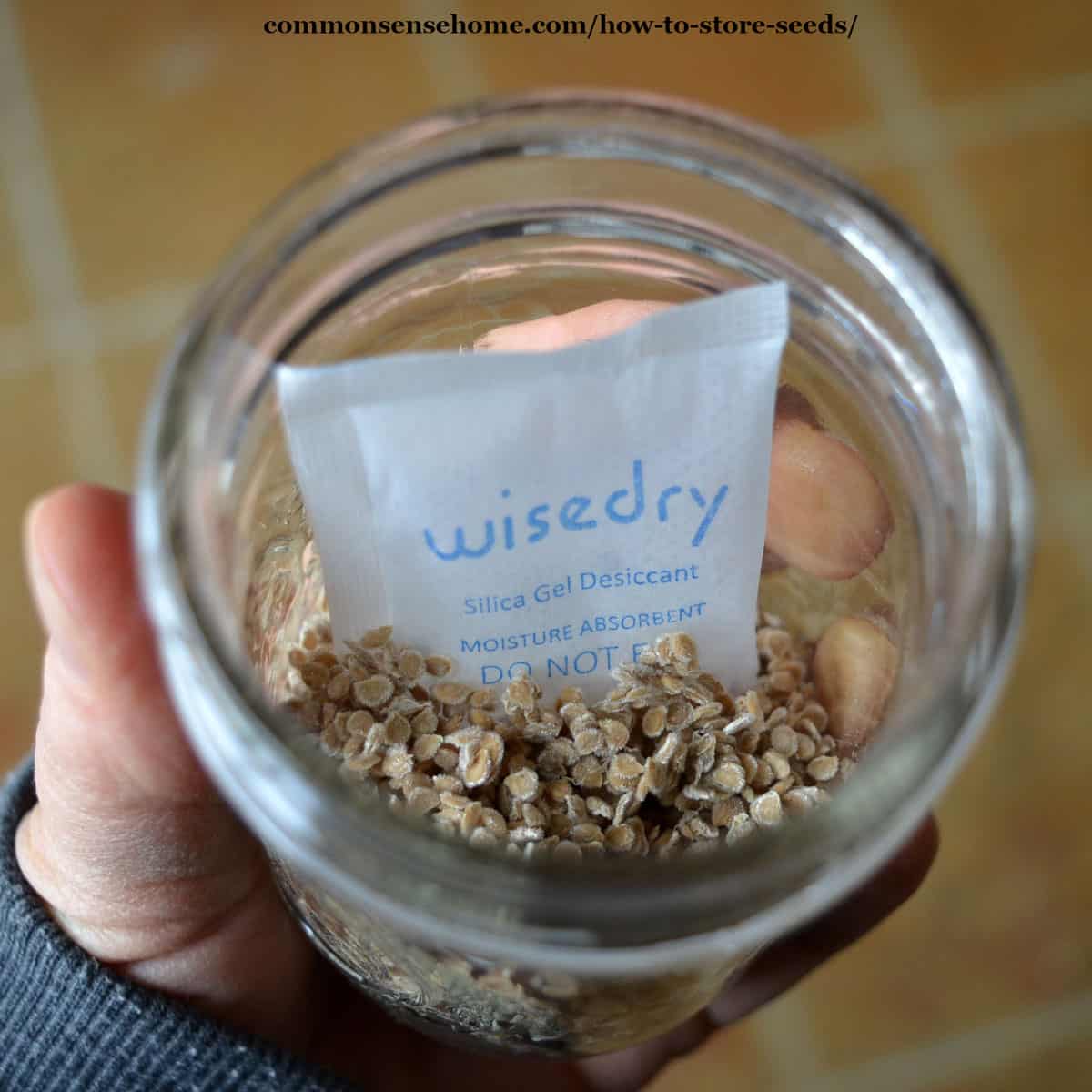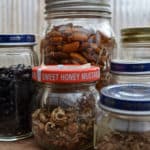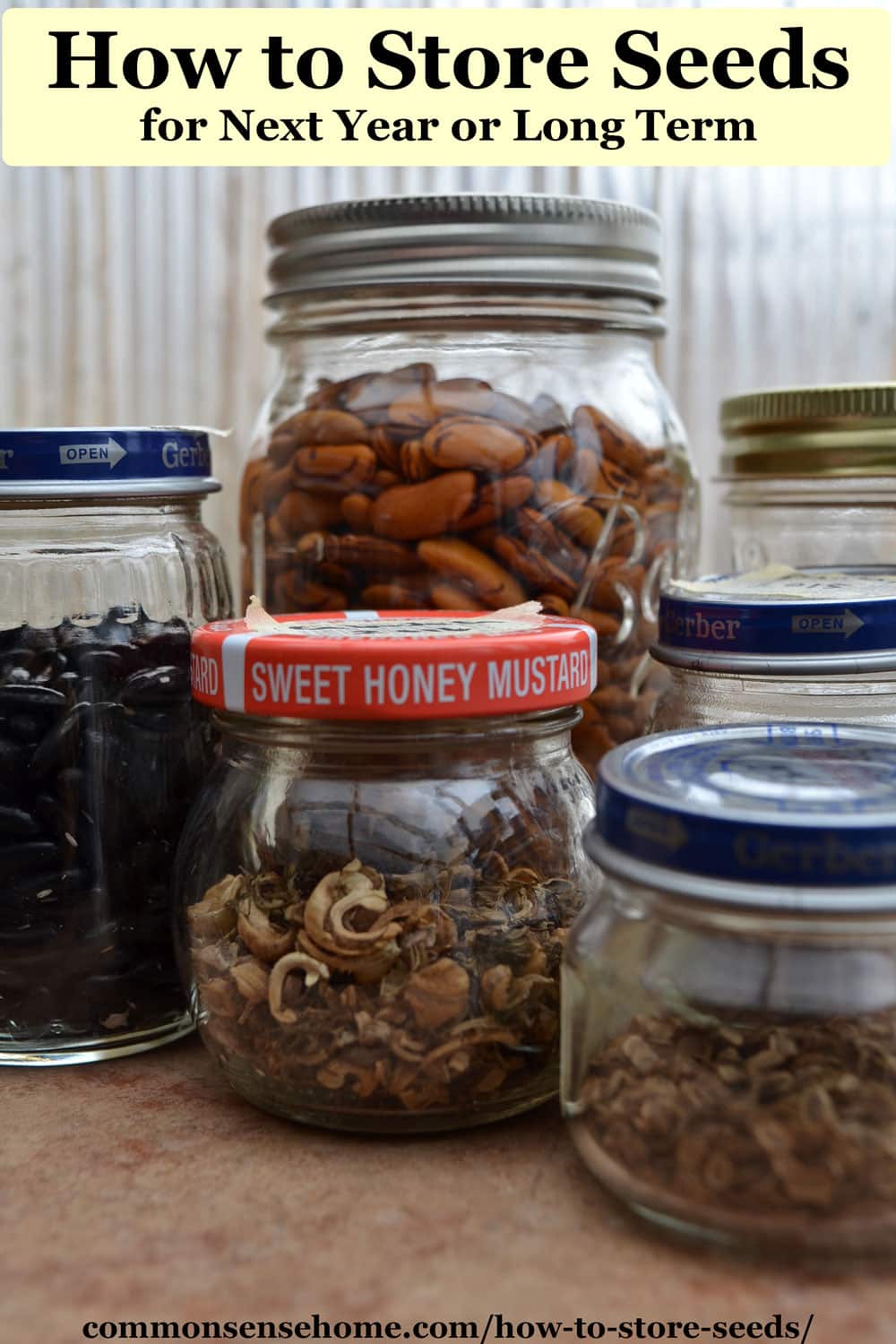How to Store Seeds (for Next Year or Long Term)
This post may contain affiliate links. Read my full disclosure here.
Whether you’re stocking up to beat rising costs, or saving seeds from your home garden, we’ll share how to store seeds long term or short term.

How to Store Seeds
There are four important factors for good seed storage:
- Keep the temperature cool – ideally below 40 ℉ (4 ℃), but cool room temperature will do
- Seeds must be dry
- Block out light
- Avoid bugs, rodents, and other pests
We’ll talk about each of these in more detail.
Storage Temperature
If you want to keep seeds from one growing season to the next, don’t stash them in a garage or garden shed. Sure, those areas may be cool in the winter, but temperature fluctuations are bad for seed storage.
Don’t leave your seeds sitting in a greenhouse or near a heat source, like near a furnace or in your kitchen! This will shorten their lives.
Your refrigerator or the freezer on your refrigerator can have similar problems. Each time we open the fridge door, the temperature fluctuates, and many fridge freezers have an automatic defrost cycle. When the temperatures go up and down, the seeds may think it’s time to wake up.
Chest freezers maintain a more uniform temperature, so they are better for long term storage. Some people keep a dedicated small refrigerator to store seeds. My friend keeps hers in their walk in cooler with good results.

I keep most my seeds in our cool, dry basement, in a cupboard out of direct light. Those that have a dramatic drop in germination rate with age and those that need cold stratification go in the freezer.
Keeping seeds in a cool, dark spot that stays below 60℉ (15℃) will allow you to store seeds for next year. There are some seeds that don’t keep well, and those I usually replace annually.
An Important Note on Cold Storage
If you store seeds in the freezer or refrigerator, you need to plan ahead when you’re ready to use them.
Take your seed storage container out of the freezer or refrigerator and let it come to room temperature before opening the container. If you open the container while it’s still cold, moisture is likely to condense on the cold seeds.
For the freezer, let the seeds rest for 12 hours, or overnight. For refrigerator storage, figure about half as much rest time. (It’s fine to take them out the day before planting.)
Moisture
Make sure you start with dry seeds.
We water our seeds to help them germinate, but damp seed storage will ruin your seeds. Commercial seed packets are dry and ready for storage or planting, but if we’re collecting our own seeds, we need to make sure they are dry enough.
Flower and herb seeds are easier to gather, because they dry on the plant, but fruit and vegetable seeds often need more care.
For instance, tomato and squash seeds get fermented to remove their slippery coating and reduce the risk of diseases. See “How to Save Tomato Seeds” for more information.

Bean seeds are quite easy to save, because you let them dry on the plant. See “Growing Pole Beans and Saving Bean Seeds“.
When you place your seeds into storage, you can add moisture absorbers to the seeds to ensure that they stay dry. I like to use these Wise Dry silica packets, because they change color, so you can see when they need to be recharged.
You can also use powdered milk or dry white rice to absorb moisture. Make sure to place the milk powder or rice in a small envelope or cheesecloth packet inside your larger seed container. Don’t mix the powder or rice with the seeds.
Light
Lots of light tells the seeds it’s time to grow. Light can also heat up your seeds. Use an opaque container, like envelopes, Mylar bags, or an old coffee canister, or keep seeds inside a dark cabinet.
Pests
Pests are always looking for a free meal, whether it’s your grain storage or your seed storage. Stashing seeds in the freezer for three days should kill off any insect larva.
Bugs also need air to breath, so if you use an airtight container and vacuum seal it, they won’t survive long. (Adding oxygen absorbers is another option if you don’t have a vacuum sealer.)
Use rodent resistant containers like mason jars, metal cans, or heavy duty plastic.
Would you like to save this?
How to Organize Your Seed Storage
You can store seeds in small airtight containers, or place multiple packets of seeds inside larger containers. Always make sure to date and label any saved seeds.
If you want to store seeds in the freezer, I’d recommend grouping them in containers based on when they get planted. That way, you only thaw the seeds you need to plant, and the others can stay in cold storage.
For instance, I start onions and leeks inside before all other crops, so I would store them together. Next comes parsley and some flowers, then tomatoes and peppers.
Check out this Printable seed starting calendar to see which seeds to group together.

I keep my seed packets in a bin, grouped by plant type. I use a rubber band to hold similar seeds together, but you can make custom dividers to fit your container. For home saved seeds, we use glass jars.
Photo albums and recipe books with sleeves are other options for organizing your seed storage.
Which garden seeds can I save for storage?
Choose open pollinated and heirloom varieties when you want to save seeds. Hybrid plants will not grow true to type.
Ideally, you should have a minimum of 20 plants to preserve genetic diversity, even for inbreeding plants. For outbreeding plants like corn, 100 or more plants are recommended.
In a small home garden this is often not practical, so do the best that you can. For self pollinating plants like beans, peppers, and tomatoes, even eight plants can be a fairly stable breeding pool.
How long do seeds last?
Some seeds store better than others, and will easily last from one year to the next. Others lose viability quickly in storage.
Seeds that last only 1-2 years include:
- Leek
- Onion
- Parsley
- Parsnip
- Pepper
- Sweet Corn
Seeds that last 3-4 years include:
- Beans
- Broccoli
- Brussels Sprouts
- Cabbage
- Carrots
- Cauliflower
- Celery
- Eggplant
- Lettuce
- Peas
- Squash
- Watermelon
Seeds that keep 5 Years or More:
- Basil
- Cucumber
- Endive
- Radish
- Tomatoes
For printable charts for vegetables, herbs, and flowers, see “How Long do Seeds Last? (w/ Printable Seed Viability Charts)“.
More Gardening Articles
We have over 100 gardening articles on the site, including:
Starting Seeds Indoors – 11 Steps to Help You Plant Seeds with Confidence
10 Heirloom Seed Companies You Don’t Want to Miss
When Should I Start My Seeds? Printable seed starting calendar


